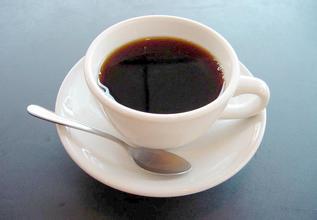Classification of plant taste of coffee tree
Plant classification
Coffee tree belongs to the evergreen tree of Rubiaceae. Since ancient times, most of the plants of Rubiaceae are plants with special effects, such as quinine tree, which is regarded as a specific drug for malaria, and Dugan, which is used to treat amoeba dysentery. Coffee is defined as the most unique alkaloid drinking flora.
The fruit of coffee is formed by the outer skin, pulp, endocarp, silver skin, and the seeds wrapped in the innermost layers (coffee beans). The seeds are located in the center of the fruit, and the parts outside the seeds are of little use.
Generally speaking, there are two pairs of seeds in the fruit, but occasionally there is only one seed in the fruit, which is called fruit bean. In order to show symmetry, we call the fruit with two pairs of seeds as female beans. There are at least 40 "species" of the genus Coffee, among which the more practical cultivated species are three original species: plateau cultivation, lowland cultivation, and minimum cultivation.
Generally speaking, after two to three years of sowing, coffee trees can grow to a height of about five to ten meters, but in case coffee beans lose their aroma, taste bad, and are easy to harvest, farmers often repair them to about 1.5 to two meters. The change begins to bear fruit three to five years after sowing. The harvest period will be 20 years after the fifth year.
Coffee tree evergreen leaves, the leaf tip is more pointed, and is two opposite groups. The surface of the leaf is dark green, the back is light green, the flower is pure white, there are five stamens, one pistil, and the petals are generally five.
But some have six or even eight petals, and the flowers will give off a jasmine-like fragrance, but the flowers will wither in about three or four days. At first, the fruit is the same dark green as the leaf surface, but as it becomes more and more mature, it will turn yellow, then red, and finally crimson.
The circular zone at the tip of the north-south regression line, which we call CoffeeZone or CoffeeBelt. Because the area is rich in rich organic matter and volcanic ash soil, the average temperature is about 20 degrees, the average annual rainfall is between 1000 and 2000mm, and there is no large temperature difference during the year, so it has become an ideal place for coffee production. Growing coffee should be strictly protected against cold, hot and dry wind and defrosting.
Taste classification
Sour mocha, Hawaiian sour coffee, Mexico, Guatemala, Costa Rica high real estate, Gillimanjaro, Colombia, Zimbabwe, El Salvador, Western Hemisphere washable high-grade new beans.
Bitter Java, Mantenin, Bogota, Angola, Congo, Uganda all kinds of old beans.
Sweet Colombian metenin, Venezuelan old beans, Blue Mountains, Gillemazaro, Mocha, Guatemala, Mexico, Kenya, Santos, Haiti.
Neutral Brazil, El Salvador, lowland Costa Rica, Venezuela, Honduras, Cuba.
Mellow Colombian metenin, Mocha, Blue Mountains, Guatemala, Costa Rica

Important Notice :
前街咖啡 FrontStreet Coffee has moved to new addredd:
FrontStreet Coffee Address: 315,Donghua East Road,GuangZhou
Tel:020 38364473
- Prev

Which varieties of coffee beans taste better?
Producing area of Blue Mountain Coffee beans: the Blue Mountain is a mountain area with an altitude of more than 1000 meters. The best Blue Mountain (the highest grade) is named after the Blue Mountain at an altitude of 2256 meters. It is planted on a slope of 80 meters to 1500 meters, with a grade of NO.1,NO.2,NO.3. Characteristics: fragrance-strong, sweet-strong, acid-weak, alcohol-strong, bitter-soft. Hawaiian Kona Coffee Bean Origin: Xia Wei
- Next

Introduction to the types of coffee beans
Producing area of Blue Mountain Coffee beans: the Blue Mountain is a mountain area with an altitude of more than 1000 meters. The best Blue Mountain (the highest grade) is named after the Blue Mountain at an altitude of 2256 meters. It is planted on a slope of 80 meters to 1500 meters, with a grade of NO.1,NO.2,NO.3. Characteristics: fragrance-strong, sweet-strong, acid-weak, alcohol-strong, bitter-soft. Hawaiian Kona Coffee Bean Origin: Xia Wei
Related
- Guji coffee producing area of Guji, Ethiopia: Humbela, Shakiso, Wulaga
- What is the most expensive variety of Qiloso in BOP multi-variety group?
- How to store the coffee beans bought home?
- Why are Yemeni coffee beans so rare now?
- Ethiopian Sidamo all Red Fruit Sun Sun Santa Vini Coffee beans
- SOE is mostly sour? What does it mean? Is it a single bean? what's the difference between it and Italian blending?
- Is Italian coffee beans suitable for making hand-brewed coffee?
- How to choose coffee beans when making cold coffee? What kind of coffee beans are suitable for making cold coffee?
- Just entered the pit to make coffee, what kind of coffee beans should be chosen?
- Can only Japan buy real Blue Mountain Coffee? What are authentic Jamaican Blue Mountain coffee beans?

